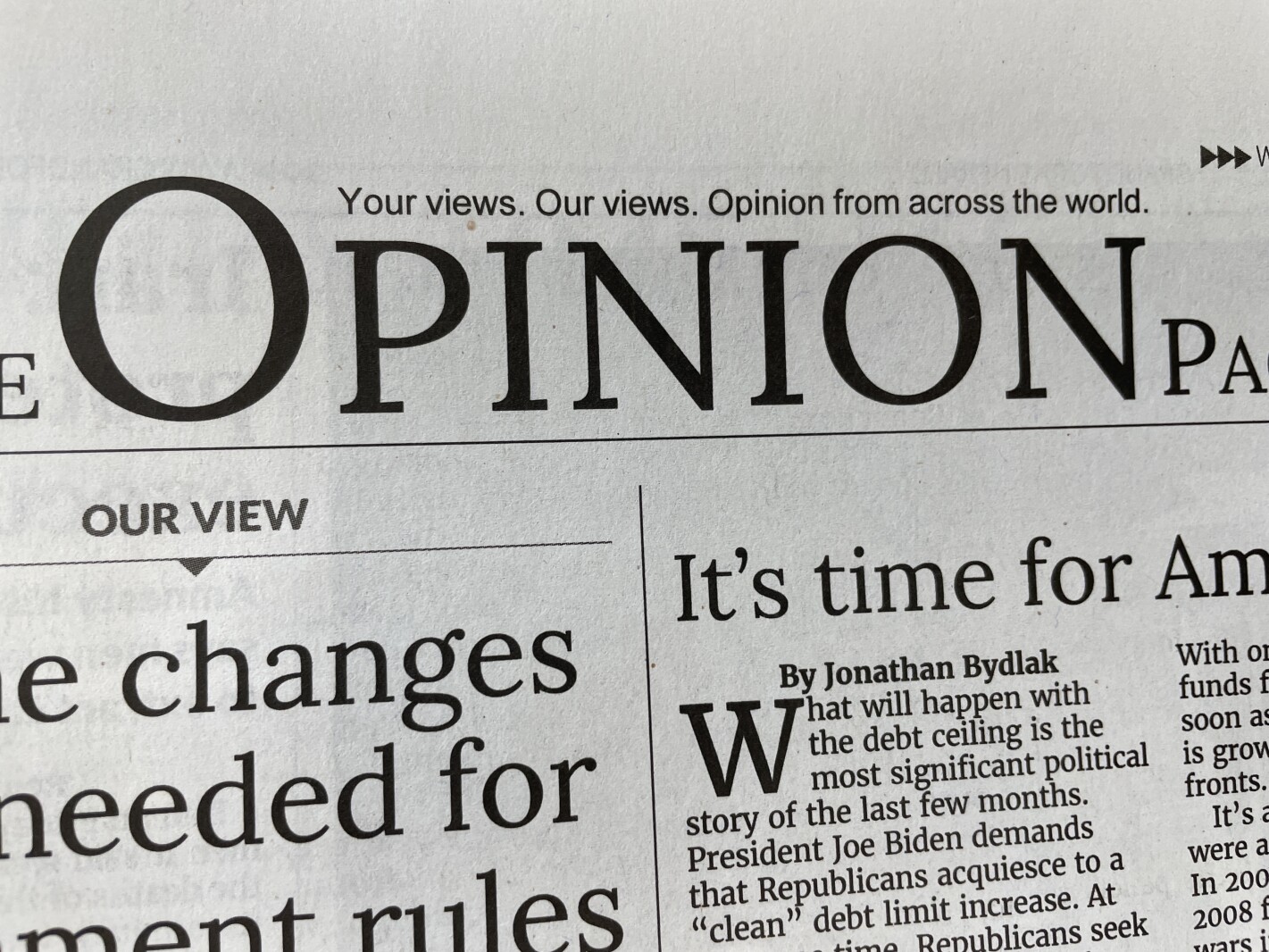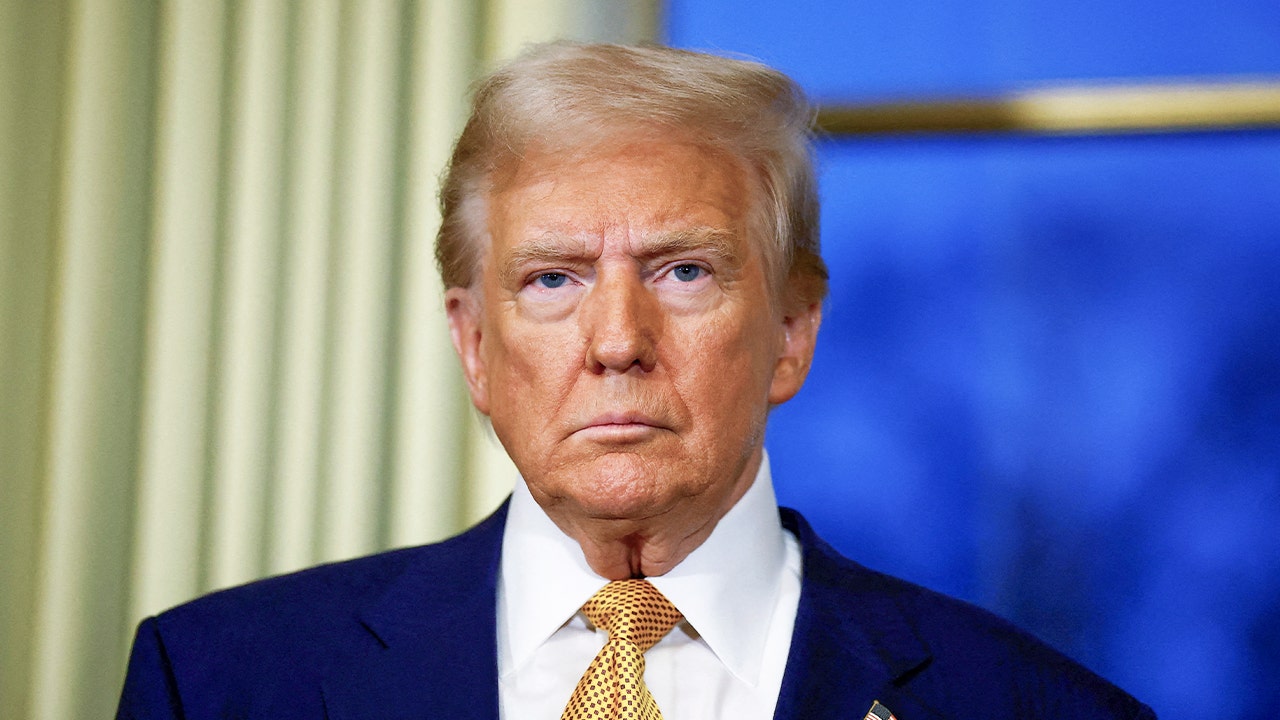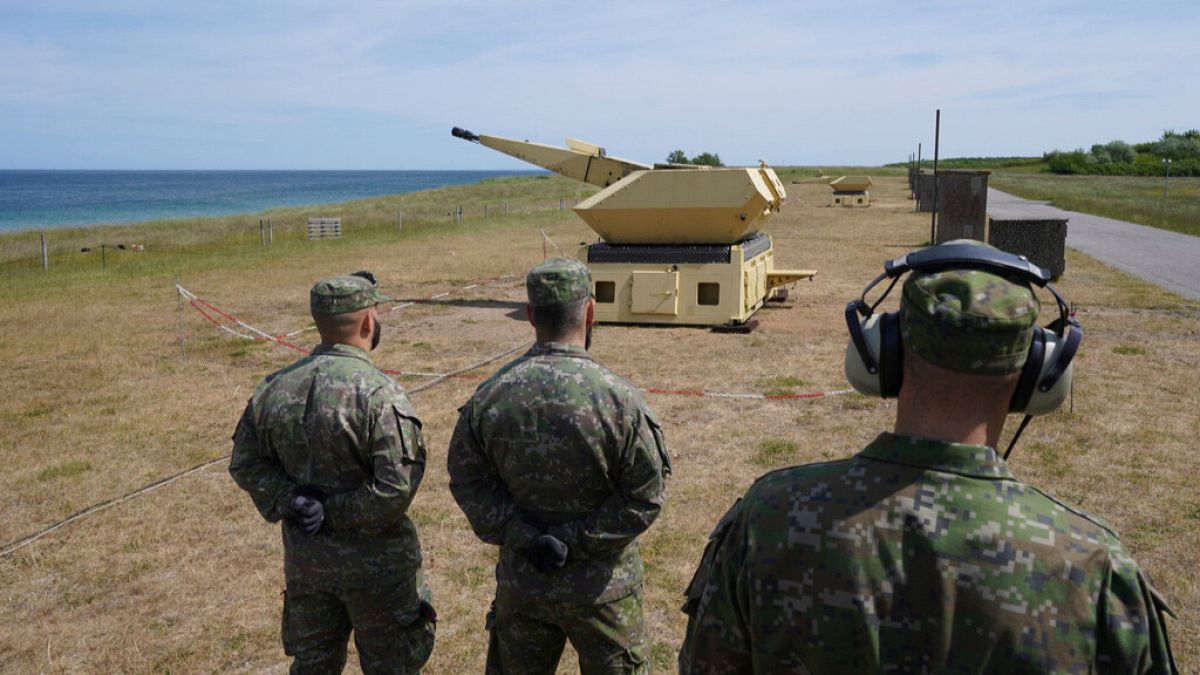New York
Former F.B.I. Spy Hunter Pleads Guilty to Aiding Russian Oligarch

The former head of counterintelligence for the F.B.I. in New York pleaded guilty in federal court in Manhattan on Tuesday to a single reduced charge of conspiring to violate U.S. sanctions and laundering payments from a prominent Russian oligarch.
The plea by the former agent, Charles F. McGonigal, represented a remarkable turn for a man who once occupied one of the most sensitive and trusted positions in the American intelligence community, placing him among the highest-ranking F.B.I. officials ever to be convicted of a crime.
Appearing before Judge Jennifer H. Rearden of Federal District Court on Tuesday, an emotional Mr. McGonigal stood up and said that he had broken the law after his retirement in 2018 from the bureau, where he had been an expert in Russian counterintelligence, by aiding an effort by Oleg V. Deripaska, a Russian billionaire under U.S. sanctions, to investigate a rival.
“I have understood what my actions have resulted in, and I’m deeply remorseful,” Mr. McGonigal said, his voice breaking. “My actions were never intended to hurt the United States, the F.B.I. and my family and friends.”
The conspiracy charge he pleaded guilty to was newly filed by prosecutors on Tuesday, replacing the original indictment handed up by a grand jury in January that had included more serious charges of violating U.S. sanctions and laundering money. Under the plea deal, the maximum prison term Mr. McGonigal could serve is five years, instead of the sentence of up to 20 years he might otherwise have faced.
In court, Mr. McGonigal, 55, told the judge that he had known he could not legally perform services for Mr. Deripaska, who was placed on a U.S. sanctions list in 2018. He said he had understood that his work in the second half of 2021 to collect “open source” negative information on Vladimir Potanin, an oligarch who was a business competitor of Mr. Deripaska, was likely to be used in an effort to get Mr. Potanin placed on the sanctions list as well.
He admitted knowingly arranging for payments to be routed from a Russian bank through a company in Cyprus, and then to a corporation in New Jersey, to conceal that the source of the money was Mr. Deripaska.
Judge Rearden scheduled Mr. McGonigal’s sentencing for Dec. 14.
In the initial charging document, prosecutors from the U.S. attorney’s office for the Southern District of New York said that Mr. McGonigal and an associate had received payments totaling more than $200,000 for their work investigating Mr. Potanin under a contract with an aide to Mr. Deripaska. They also hired subcontractors for the investigation, the indictment said.
But on Tuesday, Mr. McGonigal told the judge that in the end he had netted only $17,500, and he agreed to forfeit that amount.
The plea brings the prosecution of Mr. McGonigal in New York to a relatively speedy conclusion after fewer than seven months. He had been arrested by F.B.I. agents in January at John F. Kennedy Airport upon his return from an overseas business trip.
Mr. McGonigal still faces a second indictment brought by federal prosecutors in Washington on charges that accuse him of concealing his acceptance of $225,000 from a businessman and of hiding dealings in Eastern Europe while working for the bureau. Mr. McGonigal has pleaded not guilty to those charges but is in talks to resolve them; his lawyer, Seth D. DuCharme, told the judge overseeing the Washington case that he expected to provide an update on the talks after Labor Day.
Although Mr. McGonigal was privy to highly classified information, a three-year investigation found no evidence that he had passed secrets to foreign adversaries, according to people with knowledge of the case who spoke on condition of anonymity to discuss the ongoing matter. The F.B.I. concluded that Mr. McGonigal’s misconduct was limited to corruption, the people said.
Mr. Deripaska, who has been called “Putin’s oligarch” because of his close relationship with the Russian president, Vladimir V. Putin, is among the best known of the businessmen who became rich as Russian state resources were doled out to friends of the Kremlin after the fall of the Soviet Union. Mr. Deripaska and others were also accused last year by federal prosecutors in New York of violating U.S. sanctions through real-estate deals and other actions, including trying to arrange for the oligarch’s girlfriend to give birth to their two children in the United States. Mr. Deripaska, a Russian citizen, is unlikely to be extradited to face the charges in the near future.
The prosecutors in Mr. McGonigal’s New York case have said that before the U.S. government expanded sanctions in 2018, following Russia’s interference in the 2016 American presidential election, Mr. McGonigal had reviewed a preliminary sanctions list with Mr. Deripaska’s name on it. Around the same time, they suggested, Mr. McGonigal was seeking a connection with Mr. Deripaska by arranging a New York Police Department internship for the daughter of one of the oligarch’s aides. (A senior police official has said it was actually a “V.I.P.-type tour.”)
After Mr. McGonigal retired, he and his co-defendant in the New York case, a court interpreter and former Russian diplomat named Sergey Shestakov, referred the same Deripaska aide to a law firm for help getting sanctions removed, according to the original charges in New York.
While negotiating the law firm agreement, Mr. McGonigal met with Mr. Deripaska in Vienna and London, referring to him in electronic communications as “the Vienna client,” prosecutors have said. Mr. Deripaska paid the law firm $175,000 a month; the firm passed $25,000 on to Mr. McGonigal as a consultant and investigator, the prosecutors said.
Mr. Shestakov has pleaded not guilty to violating U.S. sanctions, money laundering, conspiracy and making false statements to the F.B.I. His lawyer, Rita M. Glavin, did not respond to a request for comment.
The deal to investigate Mr. Potanin was made with an aide to Mr. Deripaska in the spring of 2021, prosecutors said.
In November of that year, Mr. McGonigal and Mr. Shestakov were trying to obtain “dark web” files, purportedly about $500 million in hidden assets held by Mr. Potanin, in exchange for a payment of up to $3 million, Rebecca Talia Dell, an assistant U.S. attorney, said in court Tuesday. Before that transaction could be completed, F.B.I. agents seized Mr. McGonigal and Mr. Shestakov’s electronic devices, bringing their work for Mr. Deripaska to an end, prosecutors have said.

New York
Fear on the Subway: Perception and Reality

Good morning. It’s Wednesday. Today we’ll look at the perceptions and the realities of crime in the subway. And, because it’s the first day of the state legislative session, we’ll look at the colonial-era lawyer who compiled a book of state laws when state government was brand-new.
Last year ended and 2025 began with a disturbing torrent of incidents in the subway: a woman burned to death on a subway car that was parked at the end of the line in Brooklyn, a man stabbed to death on a train in Queens and at least three other attacks.
Each heightened the perception that the subways are unsafe.
Mayor Eric Adams and Jessica Tisch, the police commissioner, used the word “perception” seven times in a briefing on citywide crime statistics on Monday. “The subways will always be a bellwether for the perception of public safety in New York City,” Tisch said. “Declining crime numbers are significant, but we must still do more because people don’t feel safe in our subways.” Later the mayor said: “It is clear perception always overrides reality.”
I asked Andy Newman, who covers homelessness and poverty in New York — and used to cover transportation — to talk about the perception and reality of recent crimes in the subway.
The crime figures that Adams and Tisch released echoed a New York Times analysis of M.T.A. and police statistics from 2022, which showed that the chance of being a victim of violent crime in the subway was remote — roughly the same as the chance of being injured in a car crash during a two-mile drive. Why does the subway seem scarier?
People in cars tend to feel like the car itself is protecting them from external threats — it’s like you’re driving around in a little tank. I know, so is everyone else, but fear is not a rational thing.
In the subway, it’s just you, whoever else is there, and a train that weighs about 600 tons (not counting the passengers) barreling in.
And a subway car is a confined space where there may be no easy way to escape danger. That can make people feel trapped and vulnerable, which is scary.
Statistically, violent crime in the subway has seesawed in the last few years. But hasn’t there been an increase in several important categories, and doesn’t that go back to before the pandemic?
Yes, compared with before the pandemic, the number of murders in the subway has been higher in the last few years, though it has fluctuated a bit. Incidents of people getting pushed to the tracks have also risen, and the rate of felony assaults is more than double what it was before the pandemic. Misdemeanor assaults in the subway have also increased, though not as much. Robberies, for what it’s worth, have not.
So the perception that the city is less safe, or unsafe, is a lingering consequence of the pandemic?
A lot of people think that something changed during the pandemic and that there were suddenly more homeless people with untreated mental illness on the streets or in the subways.
People with serious mental illness are more likely to be the victims of crime than the perpetrators. But there is a certain percentage of psychotic people who are capable of lashing out.
Some of this may be due to a drop in the number of psychiatric beds in hospitals, but no one knows for sure.
There was a point at the height of the pandemic when paid ridership on the subway had plummeted and homeless people — who were avoiding shelters because they didn’t want to get sick — made some of the trains seem like rolling encampments. That’s no longer the case, but the perception is that things never quite went back to what they were before.
One transit advocate you talked to said that the M.T.A. has poured so many resources into stopping fare-beating. Would the subways be safer if there were more police officers and M.T.A. personnel on the platforms, instead of at the turnstiles?
It’s hard to say.
People have been pushed to the tracks even when police officers were patrolling on the platform but were not close enough to stop the attack. It takes only a second to push someone off the platform.
The police seem to believe that the people who habitually jump turnstiles are more likely to go on to commit more serious crimes once they’re in the subway system, so keeping them out prevents serious crime. But the police cannot be everywhere. It’s very hard to keep someone out if they want to go in.
Weather
Expect sunshine and wind gusts with temperature in the upper 20s. For tonight, look for partly cloudy skies with temperatures in the low 20s.
ALTERNATE-SIDE PARKING
In effect until Jan. 20 (Martin Luther King Jr. Day).
The latest New York news
In 2266, will anybody remember what state lawmakers do this year?
Today is the first day of the state legislative session in Albany, the first official workday for the Assembly and the State Senate.
In 2266, 242 years from now, will anyone still be talking about the laws they pass?
That question came to mind when Peter Klarnet, a senior specialist in Americana at Christie’s, picked up “Laws of the State of New York,” published 242 years ago, a compendium of actions taken by “the first session of the Senate and Assembly after the Declaration of Independence.”
It turned out that Klarnet was less excited about the book than about what he had found inside, a handwritten copy of the Declaration of Independence, apparently the only manuscript copy in private hands. Christie’s plans to sell it in on Jan. 24. The presale estimate is $2 million to $3 million.
The manuscript was written by Samuel Jones, who had compiled “Laws of the State of New York” with another colonial-era New Yorker, Richard Varick. Their names live on — Jones’s in Jones Beach on Long Island and Great Jones Street in NoHo, and Varick’s on Varick Street in Lower Manhattan.
Klarnet said Jones’s legacy also included proposing compromise wording that broke a deadlock over the Bill of Rights and cleared the way for New York to ratify the federal Constitution. New York’s state Constitution was the only one that originally began with the Declaration of Independence; Jones apparently wrote out the manuscript that Christie’s is selling to take to the state’s ratification convention in 1788.
Looked at from the polarized 2020s, the back story of comity and compromise seems improbable: Jones had been a British loyalist during the Revolutionary War. But after the British surrendered, he became an ally of the state’s first governor, George Clinton, who had been on the side of the colonials as a brigadier general in the state militia.
The copy of “Laws of the State of New York” that Christie’s is selling has notes by Jones in the margin about laws that had been revised or repealed into the 1790s. He had been elected to the Assembly in 1786 and the State Senate in 1790, and in 1797 was appointed the state’s first comptroller.
So what about that question — the one about whether laws passed in this legislative session will be remembered 242 years from now?
I asked the current comptroller, Thomas DiNapoli.
“I hope you’re not thinking about congestion pricing,” he said, laughing.
Dear Diary:
On the train in Brooklyn,
a lady stood facing the doors.
She s-l-ow-l-y extended her front leg
in an elegant line
and pressed her toe into the ground
with purpose.
The toe lightly tapped
and tapped again.
The movement caught my eye — a dancer!
Gemstone-studded ballroom heels
peeked out of her “The Heart of NY” tote.
With front leg extended,
she lightly flicked the leg upward in a tango kick,
silently dancing on the way home.
— Sarah Jung
Illustrated by Agnes Lee. Send submissions here and read more Metropolitan Diary here.
Glad we could get together here. See you tomorrow. — J.B.
P.S. Here’s today’s Mini Crossword and Spelling Bee. You can find all our puzzles here.
New York
Man Charged in NYC Subway Burning Pleads Not Guilty and Says He Was Drunk

The man charged with burning a woman to death on the New York City subway last month told investigators that he did not remember the incident because he was blackout drunk at the time, according to a transcript of his interrogation released by prosecutors on Tuesday.
The man, Sebastian Zapeta-Calil, 33, pleaded not guilty to five counts, including first- and second-degree murder, in a five-minute hearing on Tuesday morning in Kings County Supreme Criminal Court.
During his interrogation, which was conducted on the day of the attack, he described an all-night bender that ended in a blackout and then his arrest the next day in the death of the woman, Debrina Kawam.
“I am very sorry,” Mr. Zapeta-Calil said, according to the transcript, which was translated from Spanish. “I didn’t mean to. But I really don’t know. I don’t know what happened, but I’m very sorry for that woman.”
Ms. Kawam, 57, was from New Jersey but had recently stayed in a shelter in the Bronx. She was asleep on an F train parked at the end of the line in Coney Island early on the morning of Dec. 22 when Mr. Zapeta-Calil walked up, pulled out a lighter and set her on fire, the police said.
The violence of Ms. Kawam’s death and the video that captured the scene horrified many New Yorkers who have grown concerned in recent months about the safety of the subway system, despite assurances from the police that crime there has fallen overall.
In the video, which spread widely on social media, Ms. Kawam is seen standing in the doorway of a subway car as flames engulf her body and people scream in terror just out of frame.
A police officer walks by, appearing not to react, although law enforcement officials have said he was securing the crime scene.
The video then shows a man rising from a subway bench holding a shirt. But instead of smothering the flames, he appears to fan them by waving the garment at Ms. Kawam.
She was burned so badly that it took the medical examiner’s office more than a week to identify her remains.
In his interrogation, Mr. Zapeta-Calil said he did not remember any of that.
He said he began drinking shortly after he left his job as a construction laborer the night before the killing. He had no memory of seeing Ms. Kawam, no memory of the attack and no memory of when or how he boarded the train, he said.
“Sometimes when I drink and erase the memory and I don’t know,” he told investigators. “When I wake up, I’m already in the house, already sleeping. I wake up when I’m already at home. Or there are times when I wake up and I’m already at the train station.”
Federal immigration officials said Mr. Zapeta-Calil is an undocumented immigrant from Guatemala who had been deported in 2018. He later returned illegally to the United States and was living in a homeless shelter in Brooklyn for men with drug problems, according to the address he gave the police after his arrest.
Immediately after the attack, the Police Department circulated images of the assailant. The department quickly received a tip from a group of teenagers who believed they had seen the man on another train in Brooklyn.
Soon after, police officers boarded that train and detained Mr. Zapeta-Calil at the Herald Square station in Manhattan. As his interrogation wound down later that day, investigators at the 60th Precinct station house in Brooklyn showed him the grisly video of Ms. Kawam’s death.
They asked him: Did he recognize the man setting her on fire?
“Oh, damn,” Mr. Zapeta-Calil replied. “That’s me.”
Andy Newman and Sean Piccoli contributed reporting.
New York
N.Y. Families Could Receive Tax Credit of Up to $1,000 Under Hochul Plan

Gov. Kathy Hochul of New York on Monday proposed an expansion of the state’s child tax credit that would more than double what some families currently receive.
The plan, the second in a series of recent proposals the governor has made toward addressing the state’s affordability crisis, would give eligible families a tax credit of up to $1,000 per child under the age of 4. Each child from the age of 4 to 16 will qualify families to receive up to a $500 tax break per child.
In recent years, the state has offered up to $330 per child for the poorest New York families. Ms. Hochul will include the proposal in her State of the State address next week and push to include it in her executive budget.
Frustration with the high cost of living surfaced among voters in the 2024 elections, and many Democrats, amid soul searching about Republican victories, said they should have talked more about addressing affordability.
Both Ms. Hochul and Mayor Eric Adams of New York City have already announced tax cuts or refunds they want the Legislature to adopt this year. Mr. Adams’s proposal would eliminate New York City income taxes for more than 400,000 of the lowest-wage earners. Ms. Hochul announced in December that she wants to spend about $3 billion to send checks between $300 and $500 to roughly 8.6 million New Yorkers, using money from sales tax revenue.
In a news conference Monday, Ms. Hochul said she has long focused on affordability, adding that proposals like increasing the child tax credit are partly shaped by raising her own children and seeing the financial strain that experience can have on a household.
“I will continue doing this,” she said. “I’ll do it independent of elections. It’s the right thing to do.”
“People are hurting right now,” she added, “and we cannot be tone deaf as a party, as a nation or as a state to those cries for help. This is how to respond to them.”
The state has spent billions in recent years on child care and to make more families eligible for subsidies. Tax credits like the one Ms. Hochul proposed have proved popular and effective. During the early years of the coronavirus pandemic, an expansion of the federal child tax credit led to dramatic reductions in adolescent poverty. This expansion then expired, and bipartisan efforts to bring it back failed.
Ms. Hochul’s proposal would apply to more than 2.75 million children in the state; families earning up to $200,000 a year would be eligible for the credit. In a news release, Ms. Hochul’s team said the average credit for families would double to nearly $950 under her proposal.
Legislative leaders, who have suggested similar proposals in past budget negotiations, appeared receptive.
“We are very glad the governor is supporting these important tax credits, which we have long championed in the Assembly majority,” said Mike Whyland, a spokesman for Assembly Speaker Carl E. Heastie.
State Senator Andrea Stewart-Cousins, the majority leader, noted in a statement that she, like Ms. Hochul, is both the first mother and grandmother to serve in her role. Funding child care would remain a focus this legislative session, she said.
“I know firsthand how expensive raising children has become in this great state,” she said. “We look forward to discussing this proposal further. But we also know we have to deal with the rising cost of child care. The cost of child care is a burden that can overwhelm families, and we need to take steps to make affordable child care available to all New Yorkers.”
Even some Albany Republicans were open to the proposal. State Senator Jacob Ashby, a Republican from Rensselaer County, said that the state needs to do more “to make structural changes to our state economy” like lowering taxes across the board. Many of his colleagues have criticized Ms. Hochul, arguing that her administration has not done enough to lower costs for New York families.
“As someone who’s sponsored bipartisan legislation to provide new parents with targeted relief and pushed to increase the child tax credit across the board, I’m really optimistic about this proposal,” Mr. Ashby said in a statement.
If enacted, Ms Hochul’s proposal would be among the most generous child tax credits nationwide, according to researchers at the Center on Poverty and Social Policy at Columbia University. In 2023, New York and 15 other states had some form of this credit, ranging in the amount given to families and the income threshold when it phases out. When the proposal is fully up and running in several years, these Columbia researchers estimate the tax cut could drop child poverty by about 9 percent.
“When the federal child tax credit was expanded during the pandemic, we saw child poverty plummet to historic lows,” said Richard Buery Jr., the chief executive of the Robin Hood Foundation, a nonprofit in New York City that works to reduce poverty.
“With more money in your pocket, as a parent, you are less stressed, you can be more present, you can be much better and more effective at parenting children,” Mr. Buery added. “But when those federal credits expired, we saw our local poverty rate reach a 10-year high. So we know what to do. We just need the political leadership to do it.”
-

 Business1 week ago
Business1 week agoThese are the top 7 issues facing the struggling restaurant industry in 2025
-

 Culture1 week ago
Culture1 week agoThe 25 worst losses in college football history, including Baylor’s 2024 entry at Colorado
-

 Sports7 days ago
Sports7 days agoThe top out-of-contract players available as free transfers: Kimmich, De Bruyne, Van Dijk…
-

 Politics6 days ago
Politics6 days agoNew Orleans attacker had 'remote detonator' for explosives in French Quarter, Biden says
-

 Politics5 days ago
Politics5 days agoCarter's judicial picks reshaped the federal bench across the country
-

 Politics4 days ago
Politics4 days agoWho Are the Recipients of the Presidential Medal of Freedom?
-

 Health3 days ago
Health3 days agoOzempic ‘microdosing’ is the new weight-loss trend: Should you try it?
-

 World1 week ago
World1 week agoIvory Coast says French troops to leave country after decades















